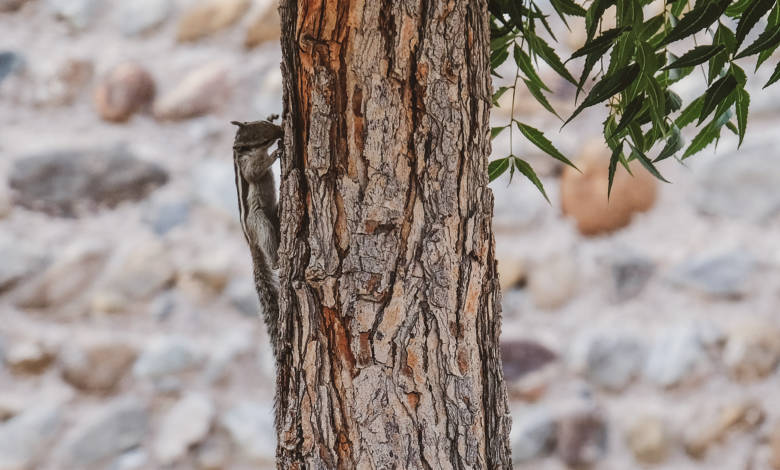
The palm squirrel is very adaptable and is present in areas ranging from forests and high-altitude mountainous terrain to scrublands, arable land and urban areas.
The Indian palm squirrel or three-striped palm squirrel (Funambulus palmarum) is a species of rodent in the family Sciuridae found naturally in India (south of the Vindhyas) and Sri Lanka. In the late 19th century, the palm squirrel was introduced to Madagascar, Réunion, Mayotte, Comoro Islands, Mauritius, and Seychelles. The closely related five-striped palm squirrel, F. pennantii, is found in northern India, and its range partly overlaps with this species., was first sighted in the Hamraniyah area of Ras Al Khaimah.
It has now also been seen in Abu Dhabi city, Samha, Dubai, Sharjah, Ajman, Al Dhaid, Kalba, Fujairah and Dibba, on the east coast.
They have also been spotted on the Omani side of Dibba.
The palm squirrel is very adaptable and is present in areas ranging from forests and high-altitude mountainous terrain to scrublands, arable land and urban areas.
The palm squirrel is about the size of a large chipmunk, with a bushy tail slightly shorter than its body. The back is a grizzled, grey-brown colour with three conspicuous white stripes which run from head to tail. The two outer stripes run from the forelegs to the hind legs only.
It has a creamy-white belly and a tail covered with interspersed, long, black and white hair. The ears are small and triangular. Juvenile squirrels have significantly lighter coloration, which gets progressively darker as they age.
Life cycle
The gestation period is 34 days; breeding takes place in grass nests during the autumn. Litters of two or three are common, and average 2.75.The adult weight is 100 g. Little is known about their longevity, but one specimen lived 5.5 years in captivity.
Diet and behaviour
These squirrels eat mainly nuts and fruits. They are fairly vocal, with a cry that sounds like “chip chip chip” when danger is present. They are opportunists in urban areas, and can be easily tamed and trained to accept food from humans. They tend to be very protective of their food sources, often guarding and defending them from birds and other squirrels.
-Wikipedia





